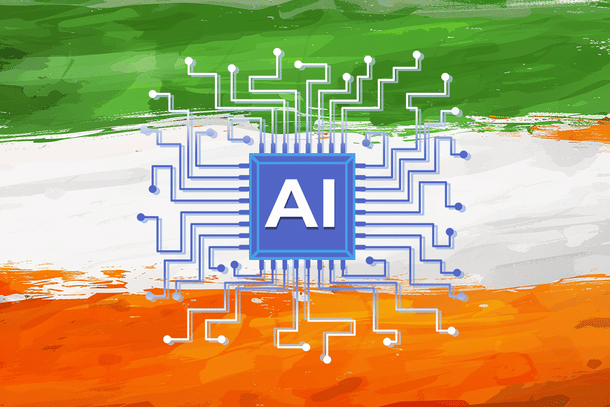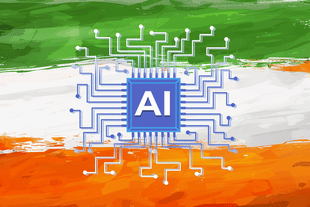Tech
India 2047: Building A Global Capital For Robotics And AI Talent
Jaishankar Bharatharaj
Oct 27, 2024, 03:01 PM | Updated 03:01 PM IST
Save & read from anywhere!
Bookmark stories for easy access on any device or the Swarajya app.


In recent decades, India has emerged as a global leader in the IT and space exploration sectors. As robotics and artificial intelligence (AI) advance rapidly, a crucial question arises: Can India leverage its capabilities to become the global skill capital for robotics and AI by 2047, its 100th independence anniversary?
India is well-positioned with its massive youth population, thriving startup ecosystem, and government support for innovation. However, realising this vision will require addressing gaps in education, enhancing infrastructure, and increasing investment in research.
This article explores India’s potential to surpass leading countries, examining its strengths and necessary reforms to understand how India can cement its position as a global leader in robotics and AI talent.
The Rise Of India
India’s rise as a technological powerhouse is undeniable. The country’s dominance in the global IT sector, with giants like TCS, Infosys, and Wipro, has created a foundation to build upon in robotics and AI. ISRO's space missions, particularly the Mars Orbiter and Chandrayaan-3 lunar landing, further demonstrate India’s ability to achieve technological excellence on a global scale.
These achievements showcase India’s expertise and infrastructure to tackle ambitious challenges, from space to robotics and AI.
India’s automation sector is rising, with robotics increasingly used in manufacturing, agriculture, and healthcare. Automation is boosting productivity and streamlining operations, while AI-powered tools are transforming sectors from customer service to medical diagnostics. These advancements indicate India’s readiness for a larger role in the global robotics and AI space.
The Need For Educational Reforms
India’s full potential lies in aligning its education system with future needs. With one of the largest youth populations in the world, India has an opportunity to develop a workforce that leads in AI and robotics. To harness this demographic advantage, providing students with the right skills, practical knowledge, and exposure to cutting-edge technologies is essential.
India produces millions of engineering and technical graduates annually, creating one of the largest talent pools globally. However, to become a global skill capital, India must emphasise practical, research-based learning. Indian students excel academically, but there is a growing need for real-world problem-solving skills, hands-on experience, and interdisciplinary collaboration.
A key example of India’s current educational approach is the story of Mahmud of Ghazni, where his persistence in 17 attempts is emphasised. Still, the Indian kings’ victories in the first 16 battles are overlooked. This reflects a broader issue in education: perseverance is taught, but innovation, leadership and strategy are often missing. To become a global skill capital, India must teach perseverance, victory, innovation, and leadership.
Rather than viewing this as a challenge, it is an opportunity to align India’s education with global needs and requirements. Introducing research-based learning, advanced labs, and competitions will give students the experience they need to thrive. By incorporating these elements into the curriculum, India can ensure its graduates are equipped to lead global technological advancements.
Educational institutions should also foster stronger collaborations with industry. Tech companies can help shape skills by providing mentorship, internships, and joint research opportunities. These initiatives will help bridge the gap between academic learning and industry requirements, ensuring students are ready to contribute meaningfully upon graduation.
Empowering The Youth With Practical Knowledge
India’s advantage lies not just in its workforce size but also in the quality of its talent. This talent must be given opportunities for hands-on projects, research, and interdisciplinary training to maintain a competitive edge. Robotics and AI require innovation and creativity, and encouraging a culture of experimentation in schools will nurture future leaders.
Practical experiences — robotics clubs, competitions, hackathons, and research projects — can transform Indian youth into a skilled workforce that competes globally. Encouraging critical thinking and experimentation will produce a generation of innovators and problem-solvers ready to tackle tomorrow’s challenges.
This shift toward hands-on, research-based learning will benefit students and position India as a leader in innovation. As industries across the globe embrace AI and robotics, countries with strong foundations in practical education will lead. India has the workforce; it now needs the infrastructure and education policies to turn potential into reality.
A Future Built On Innovation
India is on the cusp of something extraordinary. With its vast talent pool, growing expertise, and thriving startup ecosystem, the country has the ingredients to become the global skill capital for robotics and AI by 2047. By leveraging its strengths and enhancing its educational infrastructure, India can position itself as a world leader.
However, key changes must be made. While India’s current educational approach is strong in many areas, it needs to evolve to include more practical, research-based learning. With millions of graduates entering the workforce annually, the challenge is not just quantity — it’s quality.
The next step is clear: India’s education system must adapt to future demands. The journey toward becoming a global leader in robotics and AI has begun. Now, it’s about ensuring India stays on track to become a global technological powerhouse.
In the next article, we’ll explore the educational reforms that could help India truly become the global skill capital for robotics and AI.
Stay tuned as we delve into the necessary shifts in education to make India a leading global hub for robotics and AI talent.
Dr. Jaishankar Bharatharaj, a robotics scientist, is the Co-Director (Robotics) at Bharath Institute of Higher Education and Research, Chennai. He is also a Research Associate in the Department of Neuroscience and Psychology at Auckland University of Technology, New Zealand, and an Exchange Scholar at Tufts University, United States. He writes about education, pedagogy, robotics, and AI and is passionate about bringing technology to the grassroots—transforming Bharat from a body shop to a tech hotspot.





